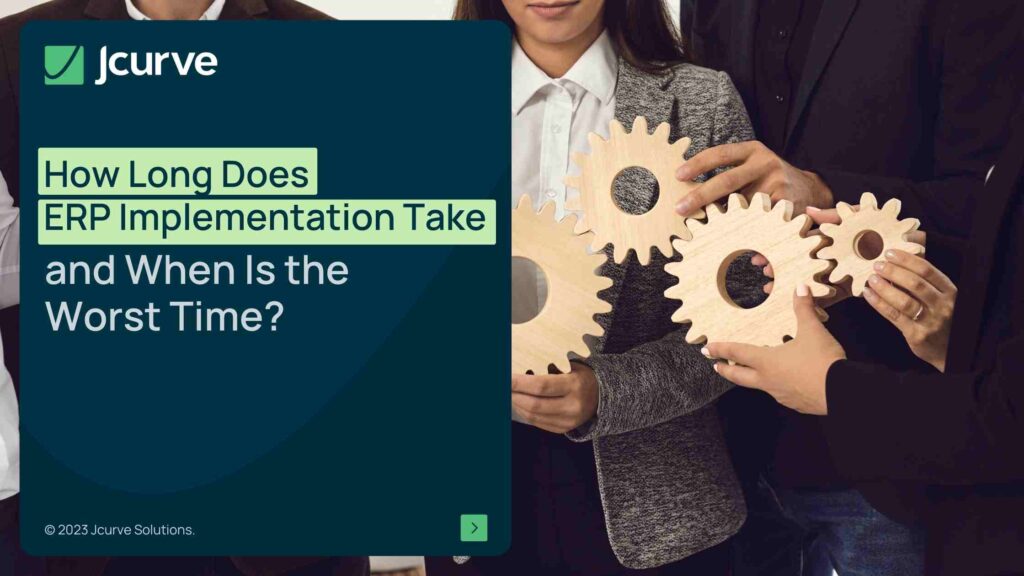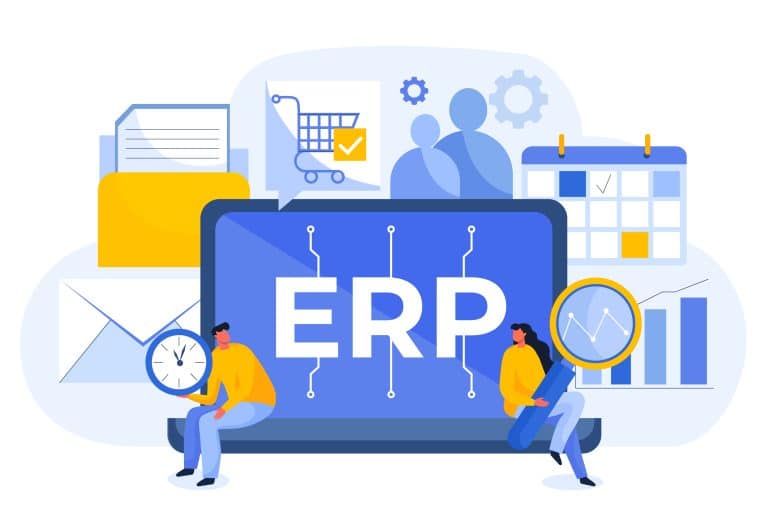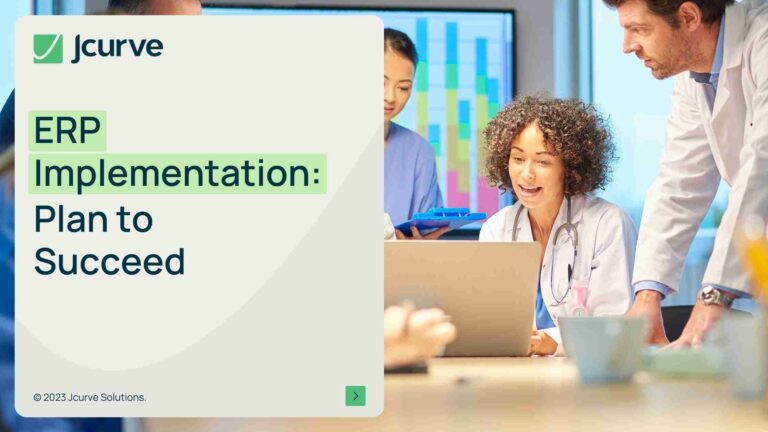Some surprises can make your day, like a product you’ve been eyeing off going on sale. However, surprises during ERP implementation can have the opposite effect. Here’s what to consider when planning for a successful ERP implementation, including the timeline and the worst times to start.
How long does an ERP implementation take?
Generally, there are no standard deadlines for an ERP implementation, but it typically takes 4 to 6 months or even longer. The duration depends on several factors such as:
- Size of the company
- Number of countries the company operates in
- Employee headcount
- Current business processes
- Expected number of users
- The amount of information to be integrated
- Industry
- Complexity of the system being installed
The industry and processes also impact timelines. Every business has different needs, but a typical implementation for small business software like JCurve ERP takes around 12 weeks with an Essentials Implementation. This sets up core business functionality and integrates essential data. For more complex businesses, it can take 3-6+ months from order to go-live.
What else can influence your ERP implementation timeframe?
- Getting the right internal resources involved and coordinated
- Gathering information on issues to solve with the new ERP system
- Availability of key staff and resources
- Documenting existing processes and identifying needed changes
- Tidying up and data-cleansing current business information
When are the worst times to implement a new ERP system?
Too long into the future.
If you’re already short on time due to multiple systems, manual record-keeping, and slow processes, postponing the ERP implementation will only make things worse. Undertaking it sooner will help you save time and set up automation to reduce manual handling.
Too close to the end of financial year.
Most companies aim to start fresh in the new financial year to avoid extra year-end processing. Allowing at least 12 weeks before the new financial year ensures a clean cut-over without rushing to meet unrealistic go-live dates.
When key staff are on holidays.
Key staff are essential for deciding which data to cleanse, what to integrate, and for learning the system. Ensure they are available throughout the implementation process.
You’re company’s busiest historical periods.
Avoid implementing ERP during peak times of sales and demand, which can add stress to your team. Plan around these periods for a smoother implementation.
Lessons others have learnt
Get everyone involved.
From the start, let your team know you’re exploring new business management software solutions. Gather feedback on pain points to help shape discussions with ERP solution providers and define what you need.
Don’t try to do everything at once.
Consider a staged approach for implementing extended functionality like barcode scanning or eCommerce integration. This prevents overwhelming staff and extends implementation time.
Understand the variables.
Factors like cloud-based ERP solutions can save time over on-premise solutions. Conversely, customisation and data cleansing can increase setup time. Working with an experienced ERP solution provider can help you understand and prepare for these variables.
Start of the new financial year.
This can be the perfect time for companies to implement a new ERP system. Prepare early and consider:
- Fulfilment of requirements
- Timing that suits your business
- Lessons from others, such as setting proper scope and involving your team
Working with an experienced ERP solution provider means leveraging their rapid implementation methodology and real-world experience to speed up the process and reduce business disruption.












